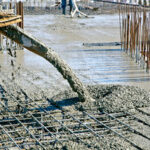Machining is a critical factor in a wide range of applications in various industries where precise shaping and custom fabrication are required. With its woodworking, metalworking and prototyping functionalities, machining is particularly useful in the engineering and construction sectors.
There are two types of machining: conventional and CNC (Computer Numerical Control). The two methods represent a distinct approach to machining, with each offering unique qualities.
Choosing between conventional or CNC machinery ultimately depends on the size of your budget and operation. There are many critical differences between the two methods, so let’s take an in-depth look at conventional and CNC machining and make it easier for you to understand what’s right for you.

Conventional Machining: The Time-Tested Technique
Conventional machining, often referred to as manual machining, has been the backbone of manufacturing for many years. Using human-operation to control machining tools, conventional machining requires workers to use buttons, levers and wheels to create the intended product.
Manual operation
Conventional machining must be operated by skilled machinists. The hands-on approach requires experience and expertise in handling the tool’s movement, speed and depth of cut. Conventional machining is only suitable for companies with adequate labor, as each machine requires a dedicated operator.
Versatile for small-scale products
With their ability to handle various materials and shapes, conventional machining is versatile and adaptable. Conventional machines are ideally suited to custom and small-scale production.
Highly skill-dependent
Creating precise and high-quality products through conventional machining relies heavily on the operator’s skill level. Skilled machinists can achieve remarkable accuracy. However, conventional machining can be incredibly complicated, so extensive training and a natural attention to detail is vital.
Affordable initial cost
The initial cost of conventional machines is generally more affordable than CNC machines, making them a cost-effective choice for businesses with budget constraints.
Small-scale production and limited replication
It’s difficult to guarantee consistency of parts due to the high level of human involvement. This means conventional is perfect for small runs or single pieces but not so much for large-scale parts production.
Like Us on Facebook!
CNC Machining: Precision Through Automation
CNC (Computer Numerical Control) machining has essentially automated the processes of conventional machining. CNC machining has been a welcome innovation, allowing manufacturers to produce large product quantities with superior accuracy.
Subscribe Us on YouTube!
Computer control
CNC machines are controlled by computer programs that dictate tool movement with pinpoint accuracy. This automation eliminates issues with human error and labor shortages as there’s no need for manual intervention.
High precision
CNC machining excels in producing complex shapes and intricate cuts. As product design is loaded into the computer system, CNC machines ensure consistency among products and can handle large-scale replication with no issue.
Higher initial cost
CNC machining typically involves a higher initial investment, but it can lead to cost savings over time, especially for high-precision and large-volume production.
Efficient production
Large-scale production is no match for CNC machining. Their ability to produce large quantities improves operational efficiency, allowing manufacturers to supply customers with more products.
Intricate handling
CNC machining has become an invaluable tool across many industries, including aerospace, automotive, medical and civil engineering. The machines can handle a number of intricate applications, such as 3D shapes and multi-axis operations.
Highly skill-dependent
Like conventional machining, CNC machining is highly skill dependent. Operators require knowledge of computer programming in order to create and modify designs and control the machines.
Which Method Is Right For You?
Selecting your machining method depends on your specific manufacturing requirements.
Here’s what we suggest:
- If you’re a small-scale operation with budget constraints, conventional machining may be the right choice for you. This will offer you flexibility and simplicity across your product management.
- If you require high-volume production and replication, CNC machining is the ideal solution. Although the initial cost may be higher than conventional machining, the ongoing efficiency and productivity will help to cover these costs.
Some manufacturers use a combination of conventional and CNC machining to offer full-scale machining services. A hybrid system allows manufacturers to utilize conventional machining for custom one-off projects and CNC machining for mass production.





















